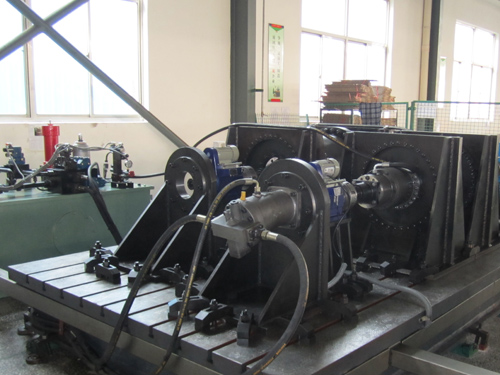Introduction to water supply system of dynamometer
The water inlet pressure at the dynamometer inlet can be greater than 0.05 MPa, generally 0.05~0.15 MPa. When the dynamometer is working on the full water line, the water supply pressure is required to be higher; when the dynamometer is working below the full water line, the water pressure can be lower. The water supply pressure shall be stable and the pressure fluctuation range shall be ± 5KPa. When the dynamometer is working, the water supply pressure directly affects the cavitation degree of the dynamometer side shell and rotor pit working cavity.

During the working process of the dynamometer, water inflow shall not be interrupted. The water inflow is about 20 liters per kilowatt hour, and the drainage temperature cannot exceed 70 ℃. The general economic drainage temperature is between 55 and 60 ℃.
The circulating water supply system is mainly composed of heat sink, water pump, stabilized water tank, inlet and outlet connecting pipes, water pressure gauge, valve, etc. The volume of the pool should take into account the heat dissipation and measure the maximum power consumption of the water circulation, and have a certain margin to compensate for the water dissipation during the circulation process. If conditions permit, it is recommended to increase the volume of the pool as much as possible. The volume of the stabilized water tank shall consider the stabilized water supply at the maximum water consumption (see the technical parameter table for water consumption). When the water supply of the water pump is greater than the water consumption of the maximum power of the dynamometer, the volume of the stabilized water tank can be recommended to be about 2~5M ', the smaller value can be taken for the small water consumption, and the larger value can be taken for the large water consumption. The volume of the pool is generally about 5 times that of the water tank. If conditions permit, it can be as large as possible.
The diameter of the inlet and outlet pipes shall meet the requirements of the diameter of the inlet and outlet of the dynamometer.
A space valve and a water pressure gauge shall be connected in series on the water inlet pipe. The gate valve is used to regulate the water inlet pressure. For fixed engine models, it will not move after one adjustment. Therefore, the gate valve can be installed in any convenient position, while the ball valve on the water inlet pipe of the dynamometer is used to open and close the water supply.
The drainage pipe is generally larger than the inlet pipe. The drainage pipe can be led to the pool through clay pipe to make it circulate. If the user has abundant water, it can also be discharged into the sewer. Two problems should be paid attention to in the drainage pipeline. First, the drainage pipe cannot be connected with the overflow pipe to prevent reverse water filling due to high drainage pressure; Second, the back pressure of the drainage pipeline should not be too large. If the back pressure is too large, it will affect the normal test of the dynamometer. Therefore, the pipeline should be as large as possible, and the pipeline arrangement should be as short as possible and the number of elbows should be less.
The circulating water is used as the water inlet of the dynamometer after descaling to reduce the formation of scale in the dynamometer. If there is no water treatment equipment, it is allowed to use tap water or clean river water, but it is not allowed to mix mud and sand and other sundries. Sea water is not suitable for use. The need to install a descaler can be considered according to whether the PH value of water in different areas is too high.


